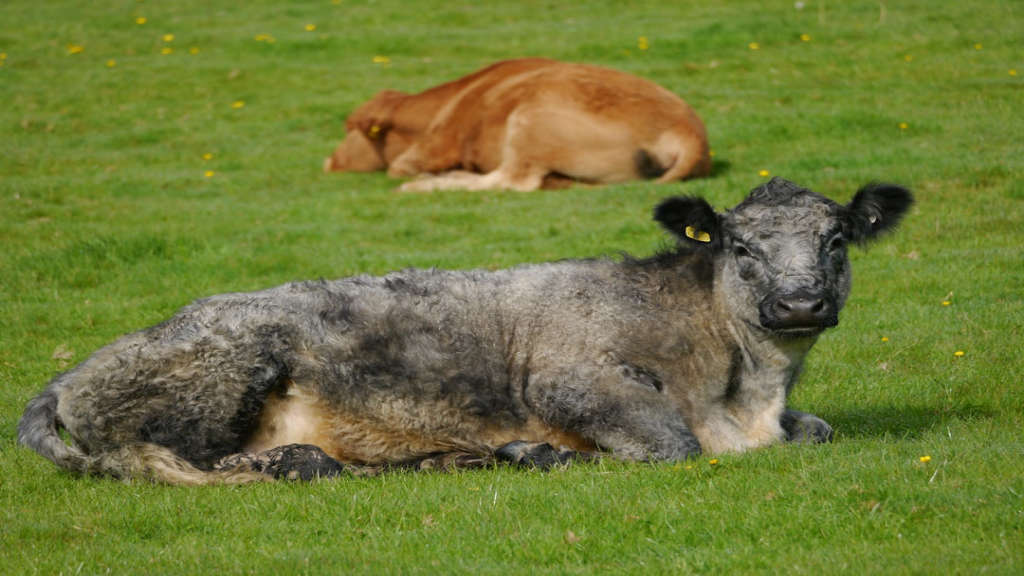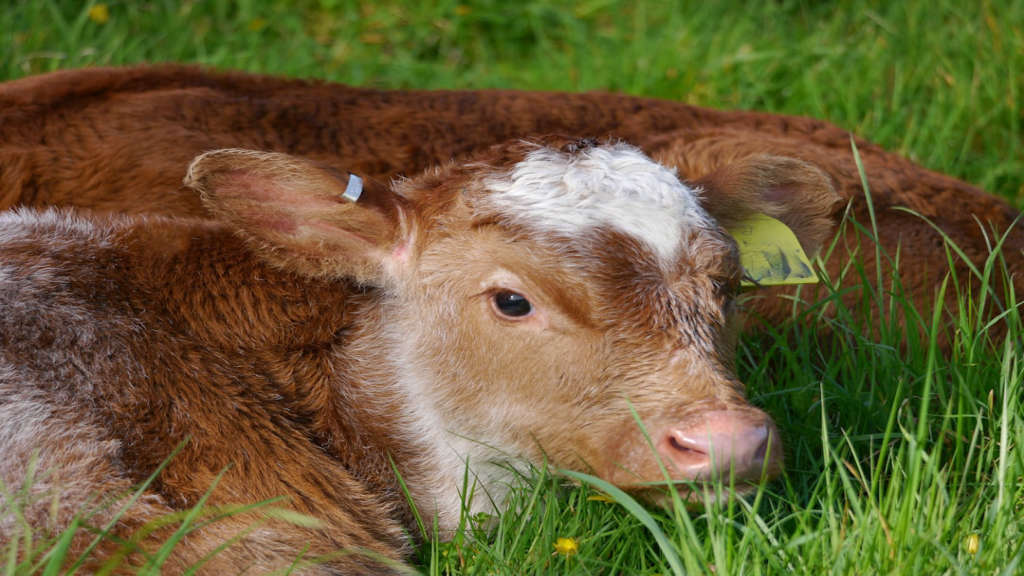In the quest for sustainable agriculture, enhancing livestock health remains a top priority for farmers and animal caretakers alike. Innovative strategies are essential to ensure the well-being of animals, which ultimately reflects on farm productivity and profitability. By exploring new approaches beyond traditional methods, we can foster environments that support both animal welfare and agricultural success.
Main Points
- Understanding the importance of livestock health in farm productivity.
- Adopting technology for better monitoring and care.
- Implementing nutritional advancements tailored to specific livestock needs.
- Utilizing preventive healthcare strategies to reduce disease outbreaks.
- Creating a supportive environment to improve animal welfare.

Harnessing Technology: Smart Farming Solutions for Livestock Wellbeing
The agricultural landscape is undergoing a transformative shift as technology steps in to revolutionize traditional practices. In the realm of livestock management, this shift is particularly noteworthy. By leveraging advanced, smart farming solutions, farmers can greatly enhance the wellbeing of their animals. It’s fascinating how technology and compassion can come together for a common cause, isn’t it?
The Role of Technology in Livestock Management
Technology plays a pivotal role in modern-day farming, especially in the management of livestock. The emergence of smart farming technologies, such as Internet of Things (IoT) devices, data analytics, and artificial intelligence (AI), has allowed farmers to monitor and manage their animals more effectively. Let us delve into how these innovations contribute to livestock wellbeing.
- Real-time Monitoring: Smart sensors can be used to track the health and nutritional needs of livestock. This data enables farmers to respond promptly to the animals’ needs, ensuring a higher quality of life.
- Efficient Resource Management: Technology helps optimize feed use and reduce waste. Smart feeding systems can match rations to the specific dietary requirements of different animals.
- Data-Driven Decisions: By analyzing comprehensive data collected from the farm, farmers can make informed decisions that enhance livestock care. Predictive analytics can foresee animal health trends, allowing proactive rather than reactive measures.
Challenges and Considerations
It’s worth noting that not all farms have embraced these technologies equally. Some farmers may feel overwhelmed by the rapid advancements or face financial constraints. Yet, the advantages often outweigh these challenges. Farmers must consider which technologies best fit their unique circumstances. For instance, the scalability of these technologies can be tailored to small-scale versus large-scale operations.
The Future of Smart Farming
As we move forward, the importance of livestock wellbeing will only increase. Sustainability and ethical treatment are becoming paramount as consumers become more conscious of farm practices. Embracing smart farming solutions can play a significant role in achieving these goals. Continuous investment in innovative technologies and education will ensure that livestock management becomes more humane and efficient.
In conclusion, the intersection of technology and livestock wellbeing offers exciting prospects for farmers and animals alike. Those who harness these smart solutions will likely witness not only improvements in animal health but also enhanced productivity in their operations. The road ahead may be complex, but the journey toward better livestock care has never been clearer.

Nutritional Innovations: Tailoring Diets for Optimal Health in Farm Animals
In recent years, the concept of animal nutrition has evolved significantly. It goes beyond merely ensuring that farm animals receive sufficient feed. Today, there is an increasing emphasis on crafting diets that promote optimal health, enhance growth, and improve overall productivity. This evolution is not just about filling their stomachs; it’s about achieving a delicate balance that addresses their unique physiological needs.
Understanding Nutritional Foundations
To understand the principles behind these nutritional innovations, one must first grasp the fundamental needs of farm animals. Different species and breeds have varying dietary requirements, influenced by factors such as age, weight, and production goals. The challenge lies in tailoring diets that not only satisfy energy needs but also provide essential vitamins and minerals. For instance, ruminants like cattle require a different balance of nutrients compared to monogastric animals such as pigs.
Innovative Strategies in Diet Formulation
One of the most intriguing approaches to diet formulation involves the use of precision feeding techniques. These methods utilize data analytics to assess individual animal needs, ensuring that each animal receives the appropriate nutrients. This tailored approach can significantly reduce feed waste and lower costs. However, it can also raise questions about resource allocation and management—issues that must be carefully navigated to avoid potential pitfalls.
Another strategy gaining traction is the integration of functional ingredients into animal diets. These additives, which include prebiotics and probiotics, are designed to enhance gut health and nutrient absorption. Yet, the science behind these innovations often sparks debates within the industry. Are they truly effective, or are they just a passing trend? Understanding their impact requires ongoing research and an open mind.
The Impact of Diet on Overall Health
The relationship between health and diet is not to be understated. A well-balanced diet can bolster the immune system, improve reproduction rates, and even enhance the quality of products, such as milk and meat. Farmers are beginning to recognize that investing in nutrition is synonymous with investing in long-term sustainability for their operations. Yet, achieving this harmony is often more complex than it appears.
Challenges and Considerations
Despite the advances in nutritional science, farmers often face challenges when implementing these innovations. The availability of quality ingredients, fluctuating prices, and the need for continuous education on nutritional practices can complicate matters. Moreover, regulatory frameworks vary significantly between regions, adding another layer of complexity.
It’s imperative that as we move forward, the focus remains on innovations that genuinely benefit animal welfare and farm productivity. Cultivating an environment of continuous learning and adaptation will empower farmers to make informed decisions about their feeding practices, ultimately benefiting not just their operations, but the greater agricultural community.
| Strategy | Benefits |
|---|---|
| Precision Feeding | Reduces waste and optimizes nutrient delivery |
| Functional Ingredients | Enhances gut health and nutrient absorption |
In conclusion, the future of animal nutrition lies in the intersection of science and practical applications. By committing to continuous learning and remaining open to innovation, farmers can not only optimize the health of their animals but also pave the way for a more sustainable and productive agricultural industry.

Holistic Approaches: Integrating Mental and Physical Wellness in Livestock Management
In the realm of livestock management, the well-being of animals often transcends mere physical care. A holistic approach involves not just the physical health of the livestock but also considers their mental wellness. This integration of mental and physical health is essential for fostering a sustainable and productive environment. When both aspects are nurtured, the result is often a healthier, more resilient herd.
The Interconnection of Mental and Physical Health
Research shows that livestock, much like humans, experience stress and anxiety, impacting their overall health. When animals are subjected to harsh conditions or neglect, they may display signs of distress that can lead to physical ailments. This relationship between mental states and physical conditions is pivotal in understanding how to better manage livestock. In practical terms, ensuring a comfortable living environment and providing adequate social interaction are crucial steps toward improving both mental and physical well-being.
Implementing Holistic Practices
To effectively integrate these dual aspects, livestock managers should explore various practices that promote a more holistic environment. For example, incorporating enriching activities such as rotational grazing can relieve boredom and stress among herd members. Moreover, fostering strong relationships with caretakers encourages trust, leading to improved mental health outcomes. Animals are more likely to thrive in an atmosphere where they feel secure and valued.
Nevertheless, it is essential to acknowledge that each animal is unique, with distinct needs and responses to management practices. Tailoring approaches based on individual animal characteristics fosters a deeper understanding of their specific mental and physical needs. This nuanced perspective can sometimes create confusion among managers who seek a one-size-fits-all solution, but it ultimately leads to a richer understanding of herd dynamics.
The Benefits of a Holistic Approach
Embracing a holistic methodology in livestock management can yield significant benefits. Improved animal welfare not only enhances productivity but also strengthens marketability. Animals that are well-cared for are often healthier, leading to higher quality products and increased profitability for farmers. Additionally, adopting such practices sets a precedent for sustainability, aligning livestock management with current trends toward conscientious and ethical farming.
In conclusion, integrating mental and physical wellness in livestock management is imperative for fostering a thriving agricultural ecosystem. While effective implementation may sometimes feel overwhelming, the rewards of a healthier herd and sustainable practices are invaluable. As the industry moves forward, embracing these holistic approaches will undoubtedly serve as the cornerstone of innovative livestock management.
Conclusion
In conclusion, prioritizing livestock health is essential for ensuring the well-being of our animals and the sustainability of our farming practices. By adopting modern strategies and maintaining a proactive approach, farmers can significantly improve the overall health of their herds. This focus not only benefits animal welfare but also enhances productivity and profitability in the long run. Therefore, investing in the right resources and knowledge in livestock management is vital for creating a healthier future for the industry. Let’s work together to elevate livestock health and cultivate a thriving agricultural system.
Frequently Asked Questions
What are the common signs of poor livestock health?
Common signs include decreased appetite, unusual behavior, lethargy, coughing, or changes in weight and coat condition.
How can I prevent diseases in my livestock?
To prevent diseases, ensure proper nutrition, maintain clean living conditions, implement a vaccination program, and manage stress levels.
What should I do if I suspect my livestock is sick?
If you suspect illness, isolate the affected animal, monitor its symptoms closely, and contact a veterinarian for guidance and treatment.